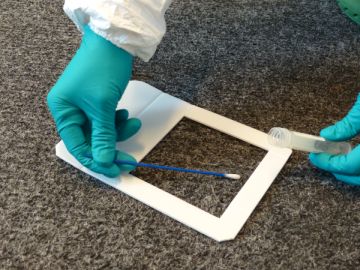Misją Instytutu jest dzialalność naukowo-badawcza prowadząca do nowych rozwiązań technicznych i organizacyjnych użytecznych w kształtowaniu warunków pracy zgodnych z zasadami bezpieczeństwa pracy i ergonomii oraz ustalanie podstaw naukowych do właściwego ukierunkowywania polityki społeczno-ekonomicznej państwa w tym zakresie.
Knowledge base search
The most commonly used methods for sampling of microorganisms from contaminated surfaces are:
- imprinting using an adhesive tape (tape is pressed to a contaminated surface and subsequently directly transferred to the microscope slide and analysed); suitable for flat and smooth surfaces;
- swabbing (sterile swab is moistened with an adequate liquid – sterile water, saline, peptone water etc. – and used to collect microorganisms deposited on a contaminated surface, which are then suspended in a liquid of a larger volume, usually identical to the one used to take the sample, and analysed with serial dilution method); suitable for corrugated and porous surfaces;

Impingement
- contact plates (special RODAC plates are usually used; they are filled with a suitable culture medium, forming a convex meniscus, with a contact surface of not less than 20 cm2; such plates are usually pressed against the contaminated surface for several seconds; sometimes an agar tape is used for the same purpose); suitable for flat and smooth surfaces;
- vacuuming (the material is collected with a vacuum cleaner on disposable cotton filters, on which it is first gravimetrically assessed and then subjected to microbiological analysis using serial dilution method); this technique can be used on any type of surface.


